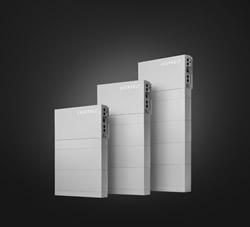IREC Applauds Interconnection Victory for Small Renewable Energy Systems
These changes will enable utilities to process applications for interconnection of small generators more efficiently and cost-effectively
January 18, 2013. Proposed modifications announced yesterday by the Federal Energy Regulatory Commission (FERC) to the agency's Small Generator Interconnection Procedures lay the groundwork for facilitating a more efficient interconnection process for small renewable generators, while maintaining safety and reliability. The Interstate Renewable Energy Council (IREC), which has worked to achieve the same result on a state-by-state basis, applauds the proposed federal actions. If finalized, the changes would reflect all the modifications recommended by IREC in response to a petition from the Solar Energy Industries Association (SEIA) to initiate a rulemaking.
These important changes, if finalized, will enable utilities to process applications for interconnection of small generators more efficiently and cost-effectively, while maintaining safety and electrical system reliability.
"This is a groundbreaking win for utilities and energy consumers," according to Jane Weissman, IREC executive director. "As across the U.S. we see a greater penetration of renewables on transmission and distribution circuits, FERC's actions recognize the importance renewables play in our energy future. IREC has worked tirelessly at the state level to advance just these types of improvements - removing barriers to make safe, reliable interconnection easier."
The proposed rule changes contain two significant modifications to the review process that will enable a greater number of small renewable generators to interconnect more quickly, without the need for a lengthy study process.
First, FERC proposes to modify the size limit for the current Small Generator Interconnection Procedures Fast Track, by adopting an approach pioneered by IREC and presented formally for the first time in this rulemaking proceeding. Instead of utilizing a single threshold across the entire system, IREC proposed adopting a size limit that would vary depending upon the voltage of the line at the Point of Interconnection, the thickness of the wire and the generator's distance from the substation. IREC developed this approach after hearing from utilities across the country regarding the relevant factors that determine what sized generator can safely interconnect at different points on the system, without the need for detailed study. Instead of limiting access to Fast Track to generators sized below 2 MWs, there is now potential for generators up to 5 MWs to interconnect using this expedited process.
Second, in response to the growing volume of interconnection applications and the number of circuits that are starting to see high penetrations of renewables, FERC proposes to modify the Supplemental Review process to incorporate a 100 percent of minimum load screen along with two additional technical screens that evaluate generators' impact on safety, reliability and power quality. Under the proposed rule, if a generator fails any of the initial Fast Track review screens, including the contested 15 percent of peak load screen, it can choose to be reviewed under the Supplemental Review screens rather than proceeding to full study.
IREC worked in both California and Hawaii on the development of this improved process and believes it will help maintain the efficiency of the interconnection process across the country if ultimately adopted by FERC.
Beyond these changes, the proposed rule also adopts an innovative Pre-Application Report that will enable generators to access greater information about existing system conditions prior to submitting a formal application. This process could potentially reduce the overall volume of interconnection requests and help make more efficient use of the existing distribution system. IREC assisted with the development of this process in California's Rule 21 and supports its adoption by FERC. Finally, FERC proposes allowing generators the opportunity to comment on any upgrades that are determined by the utility to be necessary for interconnection of their system.
"FERC's proposed rulemaking is an important step forward for interconnection in the United States," says Kevin Fox of Keyes, Fox & Wiedman, LLP. "These proposed changes have the potential to prevent Small Generator Interconnection Procedures from hindering solar market growth, while continuing to maintain the vitally important safety and reliability role of the interconnection process."
"IREC helped to develop these proposed changes through active engagement with a wide range of stakeholders in California, Hawaii and Massachusetts," adds Sky Stanfield, also of Keyes, Fox and Weidman, who represents IREC at FERC. "We believe the modifications reflect best practices on interconnection and will provide an important model for state procedures across the country."
FERC will host an additional workshop on the proposed rule changes and provide opportunity for written comment before finalizing the rule. IREC looks forward to participating in this process further to bring about changes at the federal level.
The Interstate Renewable Energy Council, Inc. (IREC) is a non-profit organization accelerating the use of renewable energy since 1982. Its programs and policies lead to easier, more affordable connection to the utility grid; fair credit for renewable energy produced; best practices for states, municipalities, utilities and industries. IREC is a respected resource and national leader in quality assessment, workforce development, consumer protection and stakeholder coordination. Since 2005, IREC has provided a foundation for the growing clean energy workforce through the credentialing of trainers and training programs and through the development of quality standards. For more information, visit http://www.irecusa.org.
Featured Product

